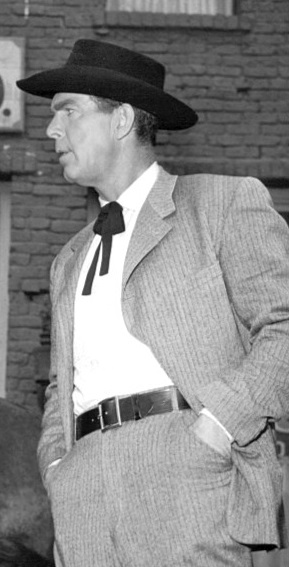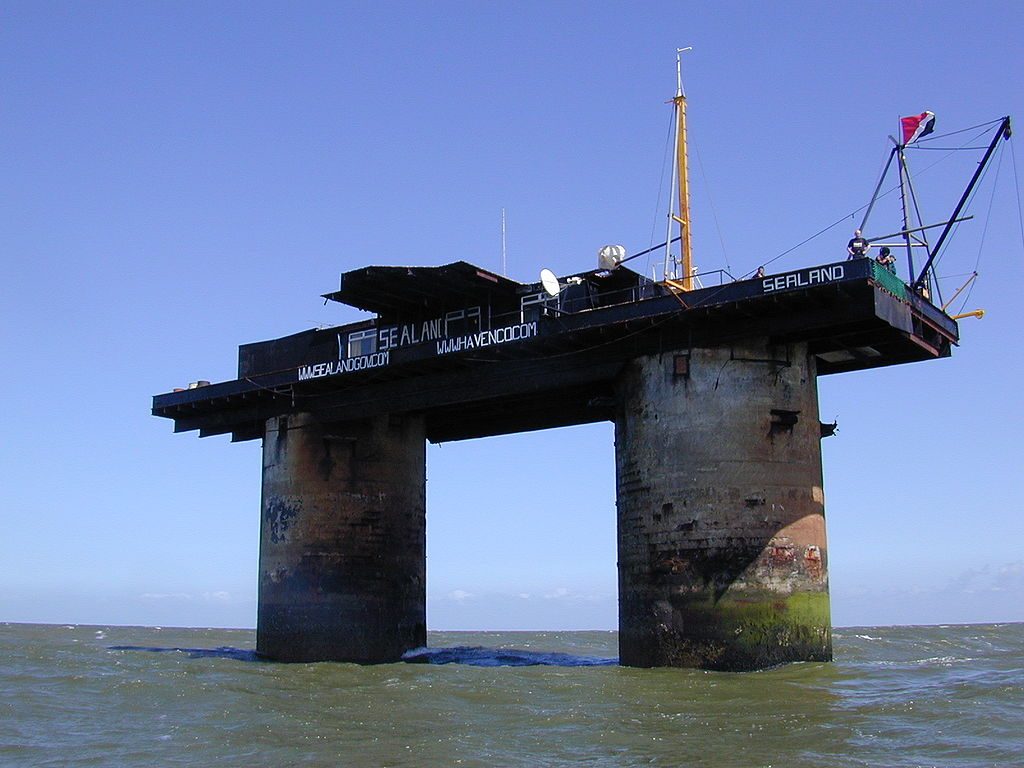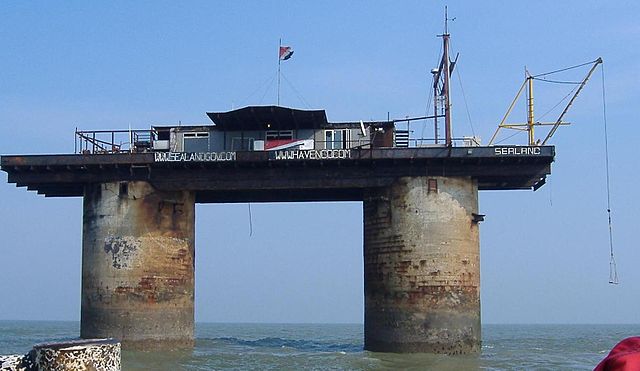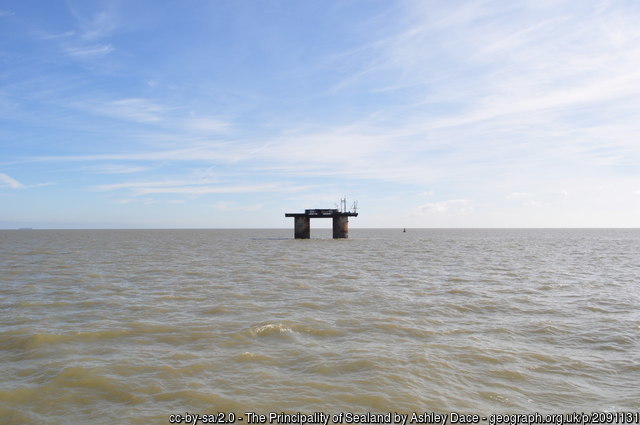Good forts have solid foundations. Today’s featured fort lays its foundation on the well-known solids of water and sand. It also more or less does away with fortification walls. In short, this fort pushes the boundaries on axiomatic fort construction while achieving those goals which we are seeking to establish as common among good fort design. Without question though, today’s fort does excel at unique methods of defensibility and adaptability over time.
The beginnings of this fort started in World War Two and the British’s desire for a few fewer air raids on the port of Harwich, Essex, and as part of a broader campaign of building forts at sea in defense of the estuary into the Thames. These forts known as the Maunsell Sea Forts for their designer, Guy Maunsell, were “portable” and constructed at dry dock before being moved into place by tugs. Like icebergs, most of their structure and mass lie beneath the surface, for once the fort was floated into position, its concrete pontoons were flooded, resting the structure on a sandbar. Only leaving two hollow columns built with Maunsell’s improved prestressed concrete sticking out of the water line. Atop these columns, a steel deck was placed (along with radar and gun emplacements), but actual living quarters were placed inside the 7 stories of the column’s height.

The specific fort we are looking at, HM Fort Roughs, for the duration of the war used its twin QF 3.7-inch AA guns paired with another set of twin Bofors 40 mm guns to repel air raids. In addition, its placement at sea provided a tactical advantage over land-based radar emplacements, providing an earlier warning for plane movements. At the end of the war though, the British quickly decommissioned and abandoned HM Fort Roughs.
Okay you’re thinking who gives a shit about four guns and some radar, that was a really boring fort. Thankfully, however, the story doesn’t end there, because even if Fort Roughs no longer pleased the crown, it did have an appeal to some really fervent music lovers. Not wanting to be limited to Britain’s restrictions on the freedom to broadcast radio waves, in 1966 Fort Roughs became occupied by some pirate radio broadcasters. Operating on the principle of finders keepers (as the fort was actually sitting in international waters) they intended to blast Top 40 into Britain, funded by advertising from an Abilene, Texas-based Cadillac dealer.

One of these radio pirates, Paddy Roy Bates, didn’t care for how things were going and decided to kick out the other pirate Ronan O’Rahilly. Bates saw the concrete and steel platform for the fort it really was and not just a mere antenna in the ocean, and when O’Rahilly came back to storm the place, Bates responded by throwing petrol bombs and firing off his guns at the attackers. For the first time in its life, the fort really showed off its chops at thwarting an individual attack. With its platform high above the sea, the fort has a unique advantage compared to land-based forts and proved to allow Bates to retain sole control of the sea-fort (this time).
The Crown was none too pleased about the exchange of fire, however, and sent in the Royal Marines forcing Bates to surrender for arrest. The court though accepted Bates’ defense that British laws held no power over the fort, given its location in international waters. Emboldened by this judicial victory Bates returned and re-christened the fort Sealand — declaring it a sovereign Principality. Just days before this declaration of independence, and scared shitless about the whole thing, the Royal Navy decides to blow up a different Maunsell Sea Fort as a message to other would-be-Bates.
In the following years after 1967, an undeterred Bates issued a constitution, flag, and national anthem. Soon he was also printing passports, issuing stamps & currency, just generally going about the business of being his own micronation in the sea. To this day his nation sells these tokens of State and even offers titles of nobility for purchase; so if you’ve ever felt like calling yourself a Duke, but felt the only thing holding you back from doing so was the permissive writ from a mostly unrecognized micro-fiefdom, I hope I made your dream come true.

E Mare Libertas (freedom from the sea)
The decade to come wasn’t going to be an easy one for Bates, for in 1978 a man named Alexander Achenbach decided he wanted to be Prime Minister of Sealand. Alexander actually then takes the audacious step of hiring mercenaries from the Netherlands and Germany and launching an invasion of Sealand. Conveniently for Alexander, Bates had left his fort as he was on a trip to England, leaving only his son occupying Sealand. So with a mixed flotilla of speedboats, jet skis, and a helicopter, Alexander captures Sealand and takes Bates’ son Michael hostage; taking this whole fort business to another level.
To Michael’s credit, his father’s penchant for tactical fort defense was successfully passed on. After the mercenaries took the fort, Michael was able to escape his hostage-takers and locate a cache of weapons with which he then arrested Alexander. Now charged with treason by Bates, Alexander’s release became an international affair, with Germany, the Netherlands, and Austria all asking Britain to free Alexander. Still recognizing Sealand as outside the British realm, Britain told them to go find someone who cares. Eventually, Germany issues a diplomat passage to Sealand, and a release was negotiated with Bates — a fact which Sealand still uses in its arguments for international recognition as an independent state.

Since then Sealand hasn’t had any major external attacks, though Alexander remained a thorn in the fort’s side for some time. Declaring himself head of a government-in-exile called the Sealandic Rebel Government, Alexander eventually caused much embarrassment to Sealand by involving counterfeit Sealand passports in a drug trafficking and money laundering scheme in Russia and Iraq; forcing Sealand to revoke all 150,000 (!?!) previously issued passports. Its toughest blow came in 2006 when a fire broke out and threatened to make the structure uninhabitable, thankfully for fort-lovers everywhere, the damage was later repaired, but the Alanis Morissette levels of the irony of being gravely threatened by a fire while surrounded by the ocean are not lost by us.
In a near full-circle return to its yo-ho-ho beginnings, the legally embattled website The Pirate Bay even sought to purchase the nation-fort outright. Sealand already had some history in making forts relevant in the digital world, by hosting a company called HavenCo which acted as a web host and data haven, presumably for memes too spicy for land-based hosting. Eventually, this sale to TPB fell through, but it did expose that the asking price for Sealand was somewhere around $900 million, so if you love forts half as much as the people in this story do: there’s your savings goal.
So what does the story of Sealand teach us about what makes a good fort? A good fort can defy conventions — if it can achieve the ends of defensibility, the means of construction don’t matter. Just like we saw with Alamut, a fort is a diplomatic force-multiplying technology — from a small footprint, even great powers can be brought to yield. Finally, some people take forts way, way seriously — and so should you, friends.



